By keeping the chronicles of history secure, two libraries in the capital have kept a bygone era alive.
What if someone told you that there is a Nepali book filled with fantasy and adventure as captivating or even more than the Harry Potter series? While some wouldn’t believe this, others would think that some Nepali writer must have been “inspired” by J K Rowling’s writing. The truth is this book, titled Bir Charitra was written some 100 years ago by Girish Ballav Joshi.
 It wouldn’t be an exaggeration to say that when it comes to talking about the wealth of Nepali literature this is but the tip of the iceberg for rich Nepali literature has remained, for the most part, under the radar for a long time. As a result of this, but not only, Nepalis find themselves oblivious to many important aspects of their own.
It wouldn’t be an exaggeration to say that when it comes to talking about the wealth of Nepali literature this is but the tip of the iceberg for rich Nepali literature has remained, for the most part, under the radar for a long time. As a result of this, but not only, Nepalis find themselves oblivious to many important aspects of their own.
All is not lost though. The good news is that places like Madan Puraskar Pustakalaya (MPP) and Kaiser Library have guarded and preserved Nepali history through Nepali literature and are now working towards safeguarding them for future generations through digitization.
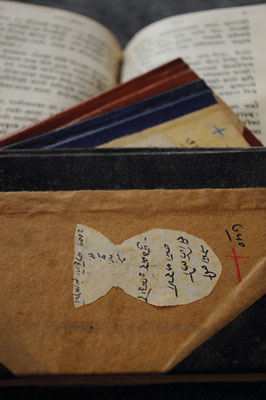 Madan Puraskar Pustakalaya
Madan Puraskar Pustakalaya
First published in 1960 BS (the Nepali Bikram Sambat calendar), Bir Charitra is a small part of Madan Puraskar Pustakalaya’s impressive collection. With an extensive pool of publications in Nepali, MPP’s inception has its roots in the love a young boy had for books. Such was this boy’s fondness for books that he would even buy books with his lunch money. That boy today is the Chairman of MPP, Mr. Kamal Mani Dixit. Appreciating his devotion towards Nepali literature, many literary figures and institutions gifted him books; his collection kept growing. In 1955 AD, this swelling personal collection was transformed into a library. Today with a collection of 31454 monographs and 5468 periodicals (July 23) and some 25 employees, MPP is considered as the best archive when it comes to Nepali literature.
It has become the “go to” place for scholars, students of Masters and PhD level and researchers, says Deepak Aryal, Research and Publication Director at MPP adding, “In the recent times we have had people doing media research come in to look into our archives. Other people like Nepali faculty of universities, law professionals and army personnel too have started using MPP for references.” MPP’s collection is not just limited to literary work; the collection also carries many books on law and old army manuals. There is yet another category of people who come knocking on MPP’s door for personal reasons. “People come here looking for books written by their father or their grandfather so that they can republish it. Recently some people had come to do research on Bhupi Sherchan’s biography. They wanted to find works written by Bhupi under his pen name,” Aryal added. According to Aryal, Dr Himang Dixit had also come looking for his father’s book. Publication houses like Orchid Books have also republished books from MPP’s collection. “We received PDFs of some amazing old books from Madan Puraskar Pustakalaya. Our recently published novel Fulmaya was also discovered there,” shared Maheshwor Acharya, Editor, Orchid Books.
 The massive archive that houses books, newsletters, posters, pamphlets, banners, calendars, manuscripts, reports, manifestos, letters, sketches, photographs, negatives, film-footage, speeches, press releases, images of wall paintings, invitations and audio-records doesn’t disappoint people who are here looking for everything that’s ever been published in Nepal. “There has to be a place where people can go to when they want to find a book or a publication from the past. MPP is trying to achieve this,” says Aryal.
The massive archive that houses books, newsletters, posters, pamphlets, banners, calendars, manuscripts, reports, manifestos, letters, sketches, photographs, negatives, film-footage, speeches, press releases, images of wall paintings, invitations and audio-records doesn’t disappoint people who are here looking for everything that’s ever been published in Nepal. “There has to be a place where people can go to when they want to find a book or a publication from the past. MPP is trying to achieve this,” says Aryal.
As he started listing out the library’s treasured possessions, it was clear that when it comes to Nepali literature, MPP has the best and rarest of the lot tucked safely under its roof. Along with Bir Charitra, which Aryal claims is the first novel of Nepal, you can find antique publications like the first edition of Jung Bahadur Rana’s Mulki Ain (1927 BS), Grammar of Nepali language by J N Aton (1820 AD), The Holy Bible (first translation 1821 AD) and many other first editions of popular books by almost all eminent Nepali writers. “We also have manuscripts of late authors like Shankhar Koirala, Bal Krishna Sama and Ramesh Bikal. Many of these are hand written and we also have a manuscript of an incomplete work of Koirala. There are also some handwritten letters of prominent Nepali writers,” Aryal further added.
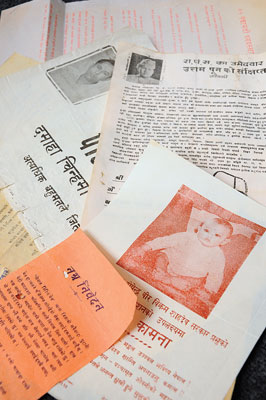 While Aryal listed out the more precious titles of the lot as much as his memory served him, it was when we went to the library for photographs that we realized how going through their storage space is no different than a treasure hunt; you never know what you dig out from pile after piles of papers stored there. In one of the plastic packets we found a poster that announced late king Dipendra’s pasni (rice feeding ceremony) and in another we found posters of old movies and even a speech written by late communist leader Madan Bhandari.
While Aryal listed out the more precious titles of the lot as much as his memory served him, it was when we went to the library for photographs that we realized how going through their storage space is no different than a treasure hunt; you never know what you dig out from pile after piles of papers stored there. In one of the plastic packets we found a poster that announced late king Dipendra’s pasni (rice feeding ceremony) and in another we found posters of old movies and even a speech written by late communist leader Madan Bhandari.
MPP also has an extraordinary collection of newspapers; from the first issue of Gorkhapatra to newspapers that used to get published from Sikkim, Benaras and Calcutta, from the time most Nepali freedom fighters and writers were living in those cities to either study or as exiles. The archiving of these newspapers hasn’t stopped, “We get around 200 newspapers every day, and there are people who bring Nepali newspapers printed in Darjeeling when they come here,” he said.
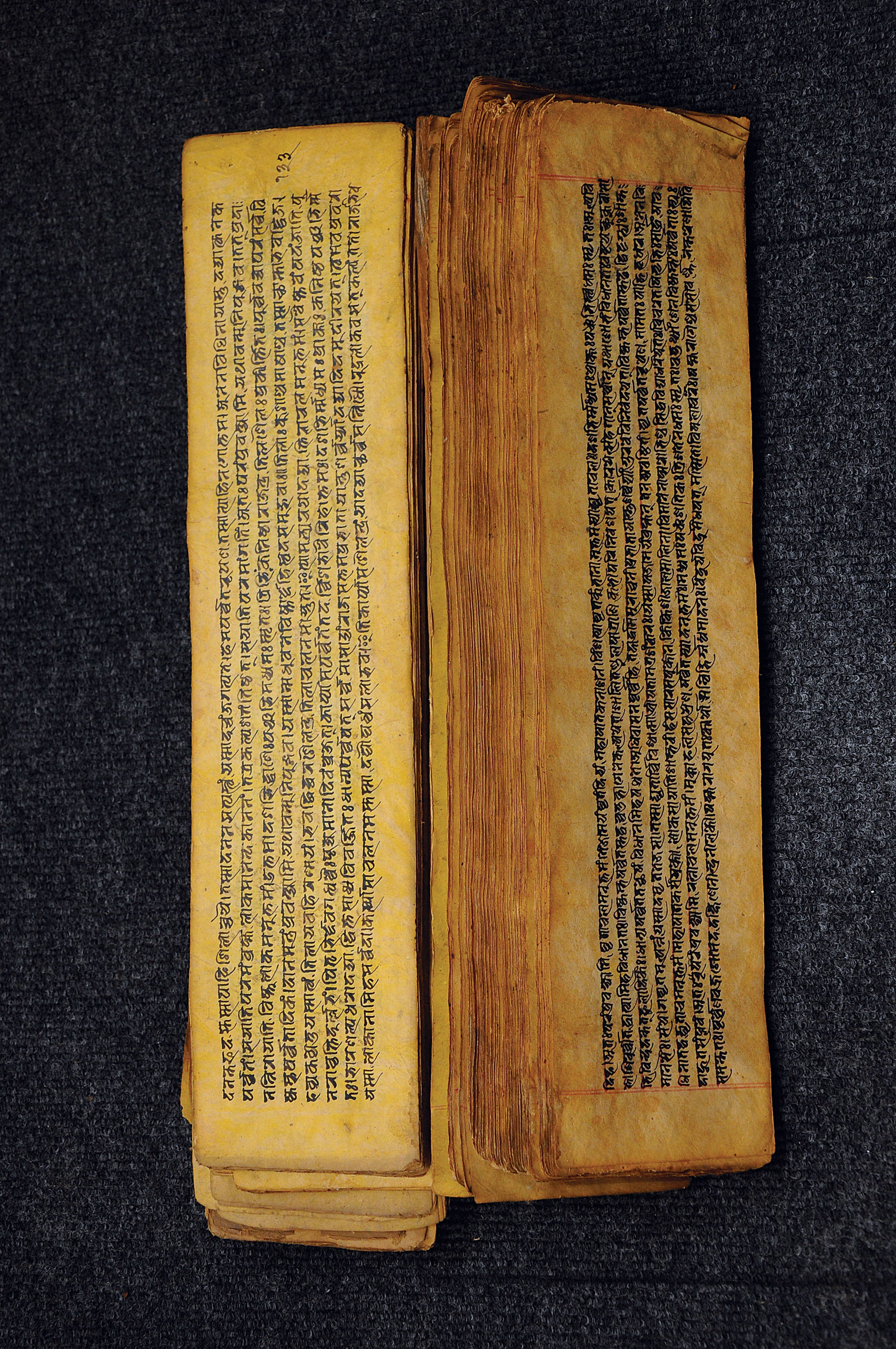 Besides keeping invaluable Nepali literary work safe, MPP has also documented Nepal’s history in its own way. A little in-depth study of the material here will reveal various facets of Nepal’s history. Aryal who has been working here for 10 years tells us how. “It was around 1925/26 BS that the printing of books started in Nepal, but MPP’s collection shows that in terms of Nepali language, a lot more had alreasdy happened in Sikkim, Benaras and Kolkata before that. Sudhasagar was the first magazine to be published in Nepal but a couple of newspapers in Nepali had already been published in Benaras before that. We have also discovered that the first Nepali grammar book was written by a foreigner,” noted Aryal. Their extensive collection of newspapers also chronicles the evolution of journalism in Nepal from writing styles and format to the appearance of the first photograph in a Nepali daily. “It was believed that the first photograph in Gorkhapatra was printed in 1985 BS, but we have found some photos in the editions of 1983 BS as well,” said Aryal.
Besides keeping invaluable Nepali literary work safe, MPP has also documented Nepal’s history in its own way. A little in-depth study of the material here will reveal various facets of Nepal’s history. Aryal who has been working here for 10 years tells us how. “It was around 1925/26 BS that the printing of books started in Nepal, but MPP’s collection shows that in terms of Nepali language, a lot more had alreasdy happened in Sikkim, Benaras and Kolkata before that. Sudhasagar was the first magazine to be published in Nepal but a couple of newspapers in Nepali had already been published in Benaras before that. We have also discovered that the first Nepali grammar book was written by a foreigner,” noted Aryal. Their extensive collection of newspapers also chronicles the evolution of journalism in Nepal from writing styles and format to the appearance of the first photograph in a Nepali daily. “It was believed that the first photograph in Gorkhapatra was printed in 1985 BS, but we have found some photos in the editions of 1983 BS as well,” said Aryal.
And it isn’t just the literary aspect of history they have kept record of. MPP has also been assembling material that reflects the changes our society and country as a whole has gone through. They have pamphlets from the general assemblies through the years of the various political parties. Aryal further added, “There used to be these hoardings around the statue at Tripureshwor, with quotes from late king Birendra. It was removed during the uprising; we have clicked photos of those and kept in our archive too.” These recording process hasn’t stopped as Aryal informs that once a week a volunteer goes around Kathmandu and brings back photos that reflect the evolution of our society. Also every year 700 to 900 books get added to their already staggering archive.
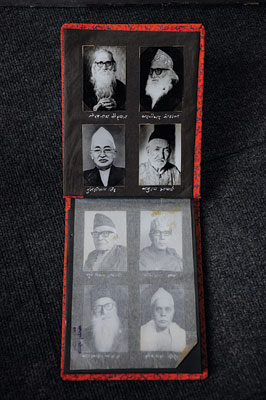 The MPP collection goes beyond print. There are gramophone records of the first Nepali female singer - Melawa Devi, a video of Laxmi Prasad Devkota, videos of Rautes - the last nomadic tribe of Nepal by Badri Bahadur Karki and recordings of folk music from all over the country, which was collected by Terrence Bech. Aryal cites Bech’s collection as one of the most treasured possessions at MPP. Bech, who came to Nepal in 1964 as a Peace Corps volunteer, went to remote corners of the country recording folk music and collecting musical instruments. In the two years he lived in Nepal, Bech collected 260 hours of recordings, 200 musical transcripts, 120 musical instruments, 7500 song texts and 41 life history studies of Nepali musicians, along with thousands of photographs. All these musical recordings are available at MPP.
The MPP collection goes beyond print. There are gramophone records of the first Nepali female singer - Melawa Devi, a video of Laxmi Prasad Devkota, videos of Rautes - the last nomadic tribe of Nepal by Badri Bahadur Karki and recordings of folk music from all over the country, which was collected by Terrence Bech. Aryal cites Bech’s collection as one of the most treasured possessions at MPP. Bech, who came to Nepal in 1964 as a Peace Corps volunteer, went to remote corners of the country recording folk music and collecting musical instruments. In the two years he lived in Nepal, Bech collected 260 hours of recordings, 200 musical transcripts, 120 musical instruments, 7500 song texts and 41 life history studies of Nepali musicians, along with thousands of photographs. All these musical recordings are available at MPP.
The problem with history is it runs the risk of fading away, be it in our memory or even in print. Talking about the problem of storage and preservation, Aryal mentioned that the print in old newspapers are fading and the paper itself has become so fragile that it tends to tear even when one merely touches it. In order to keep their huge collection safe and easily accessible to the people, MPP has taken the digital route. “After 1990 the number of publications grew and we started facing problems of storage space. So we started digitizing the books and newspapers.” While the digitalizing process started with microfilm, now they are using digital cameras for this process because “developing microfilm is very expensive and we stopped this two years back”. However, their long-term plan is to develop an online library. “While people can come to MPP and go through the digital content, when it is made available online, they won’t need to come here to access our records,” remarked Aryal.
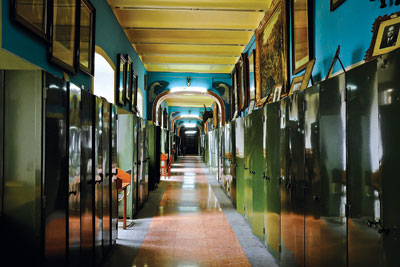 Kaiser Library
Kaiser Library
Retired Saha Pradyapak Hemant Rana along with a friend was busy looking for books. After browsing through the books in the numerous aluminum cupboards lining the long corridor on the first floor, they came downstairs to a huge hall and started browsing through the books there. When asked, Rana informed that they were looking for reference books for his wife’s thesis on the ‘hunting diplomacy of the Rana regime’. This hunt for relevant books on such a specific topic going on at the Kaiser Library in Thamel.
Probably the oldest library in Nepal, Kaiser Library houses an amazing assortment of old and rare books from all over the world. It started as the personal library of Kaiser Shumshers JB Rana, who was interested in collecting books and newspaper from a young age. His hobby for collecting books got a new direction when he got to witness a library while he was in England. The 15-year old boy was fascinated and impressed by the way books about everything and anything were stored in one place. The management of the library system had an impact on him. He also managed to buy lot of books during his visit.
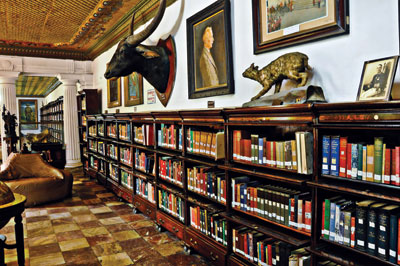 Kaiser Library remained a personal space with access to family and special visitors for a long time. In that time, the library also managed to gain much reputation evem at an international level. Professor Rana, who also happens to be the grandnephew of Kaiser Shumsher shared that in the early days many international researchers and experts would come to this library for reference purposes. “It used to get compliments as the biggest private library in Asia. French Orientalist Sylvain Levi has talked about this library in his book about Nepal. Kaiser Shumsher even helped Italian historian Lucian Gucci for his book on Nepal’s Licchavi dynasty. The library started being talked about among the diplomatic circle. They say that Chandra Shumsher even got a letter from one of the viceroys saying that he would like to see the library during this Kathmandu visit,” narrated Professor Rana.
Kaiser Library remained a personal space with access to family and special visitors for a long time. In that time, the library also managed to gain much reputation evem at an international level. Professor Rana, who also happens to be the grandnephew of Kaiser Shumsher shared that in the early days many international researchers and experts would come to this library for reference purposes. “It used to get compliments as the biggest private library in Asia. French Orientalist Sylvain Levi has talked about this library in his book about Nepal. Kaiser Shumsher even helped Italian historian Lucian Gucci for his book on Nepal’s Licchavi dynasty. The library started being talked about among the diplomatic circle. They say that Chandra Shumsher even got a letter from one of the viceroys saying that he would like to see the library during this Kathmandu visit,” narrated Professor Rana.
“The library was handed over to the government in 2026 BS. And since then it has been running as a public institution as Kaiser Library,” informed Chief Librarian Janaki Karmacharya. “There were some 28000 books when it was handed over. The whole building itself was donated along with the aluminum cupboards,” Karmacharya added. These books, which come under the ‘Kaiser Collection’ are still stored in those very cupboards. According to Karmacharya, the collection also includes 700 bundles of manuscripts in various languages.
T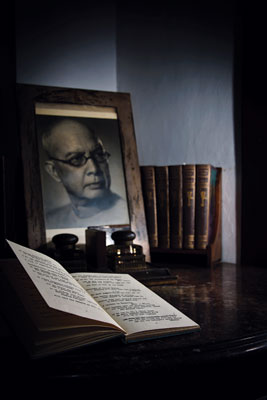 he building, which itself has much historical significance in terms of its Victorian-influenced architecture also houses many invaluable relics. One has to take a whole day or perhaps even weeks for in-depth research to go through this impressive collection which includes books about hunting, medicine, gardening, religion, astronomy, history, philosophy and literature to name a few. Each cupboard has a wooden signage placed on top indicating the different subjects of the books it contains. One would be surprised to see how well the books have been kept. Yes, these books have been there for a long time but you will not find a layer of dust on them as is the case in most old buildings. “Besides regular cleaning, twice a year we run special processes to protect the books against insects,” mentioned Karmacharya. The range of topics is fantastic: in one of the cupboards you will find the first edition of Arms and the Covenant by Winston Churchill while another has books like The Golden Treasury of Ancient Greek Poetry (second edition) by R S Wright written in the ancient Greek text. Pointing out towards the rarest of them all Karmacharya said, “We have an 1134 year-old manuscript called Susur Samita. Written in Sanskrit on a palm leaf, it can be considered the bible of surgery.” She also narrated how a foreigner came searching for a particular book about horse training. “He had looked for it in many places around the world but found it here in this library.” Karmacharya mentioned that the collection also includes handwritten journals of the Ranas.
he building, which itself has much historical significance in terms of its Victorian-influenced architecture also houses many invaluable relics. One has to take a whole day or perhaps even weeks for in-depth research to go through this impressive collection which includes books about hunting, medicine, gardening, religion, astronomy, history, philosophy and literature to name a few. Each cupboard has a wooden signage placed on top indicating the different subjects of the books it contains. One would be surprised to see how well the books have been kept. Yes, these books have been there for a long time but you will not find a layer of dust on them as is the case in most old buildings. “Besides regular cleaning, twice a year we run special processes to protect the books against insects,” mentioned Karmacharya. The range of topics is fantastic: in one of the cupboards you will find the first edition of Arms and the Covenant by Winston Churchill while another has books like The Golden Treasury of Ancient Greek Poetry (second edition) by R S Wright written in the ancient Greek text. Pointing out towards the rarest of them all Karmacharya said, “We have an 1134 year-old manuscript called Susur Samita. Written in Sanskrit on a palm leaf, it can be considered the bible of surgery.” She also narrated how a foreigner came searching for a particular book about horse training. “He had looked for it in many places around the world but found it here in this library.” Karmacharya mentioned that the collection also includes handwritten journals of the Ranas.
Besides the Kaiser collection – every book of this collection bears an emblem of Kaiser Shumsher’s name behind the cover page – the library has other sections named New collection, Children’s section and the Periodical section. The Children’s section was established on the occasion of the 100th anniversary of the library. “It is also called the UNESCO corner as books were donated by the organization,” Karmacharya added. The New collection includes books donated by writers and other people as well as those bought by the library itself. “We come up with a list of books published in a year and identify those that have historical and literary significance, including childrens’ books and buy them considering out budget. Sometimes writers themselves bring their books,” informed Karmacharya.
Researchers, school and college students and foreigners make up the major foot fall in this reference-only library which sees more than 3000 visitors each month. Along with historic books older than whoever comes looking, the visitors will also find many modern amenities here. “We allow the use of laptops here and it’s been two years since we have been providing Wi-Fi service for visitors,” said Karmacharya.
Preservation of the books and other antique décor pieces like photos and mounted animals is something the library is focusing on at present. “Around 400 rare and vulnerable books and manuscripts have been digitized and the process is ongoing. Some taxidermy specimens have been damaged as people keep touching them. The mounted tiger we have is Asia’s largest taxidermy specimen of a tiger; we had to keep it inside as people would manhandle it. There also also many photos depicting our history. All these need to be preserved for future generations,” expressed Karmacharya.
Although their stories began through a personal interest of two very different young boys, these two libraries have grown to become a gold mine of hard-to-find books, manuscripts and other materials that stand tall and proud as witness to a nation’s history. It is said that one cannot move forward if one doesn’t know his past. In an old building in Patan and a grandiose palacial complex in Thamel, the past and future of the country rests calmly, awaiting introduction to anyone who saunters in.









